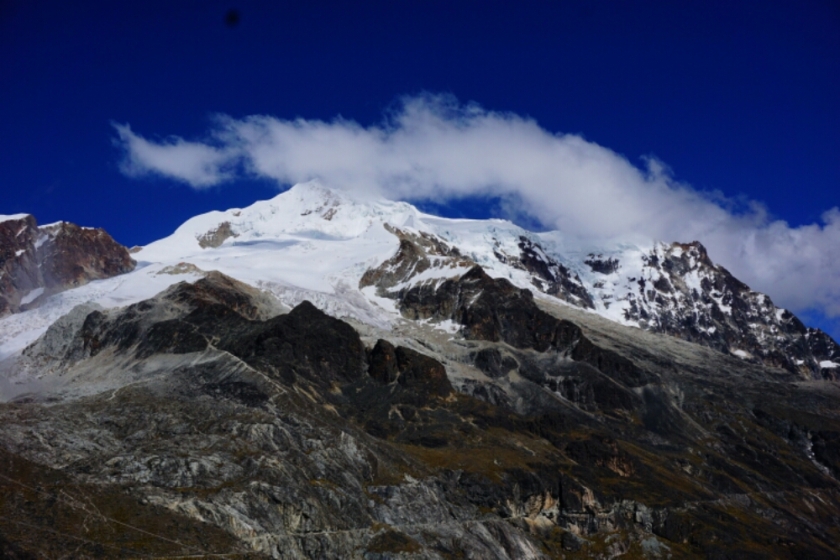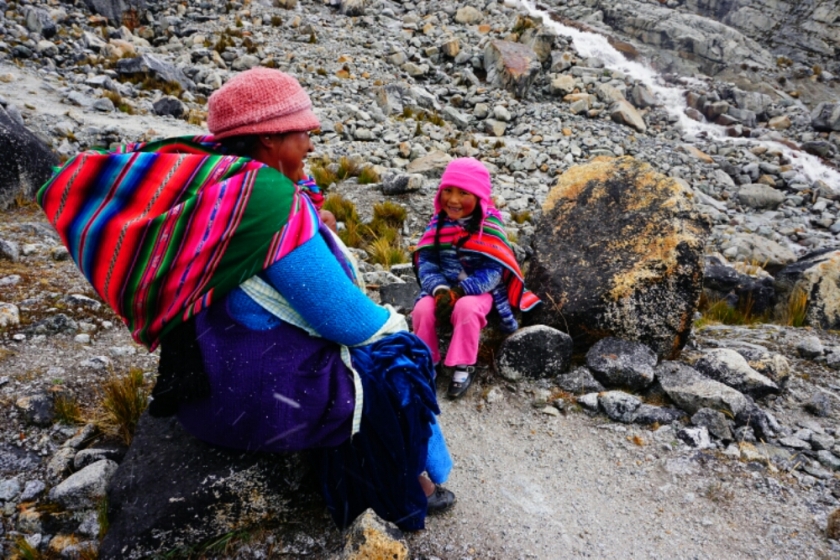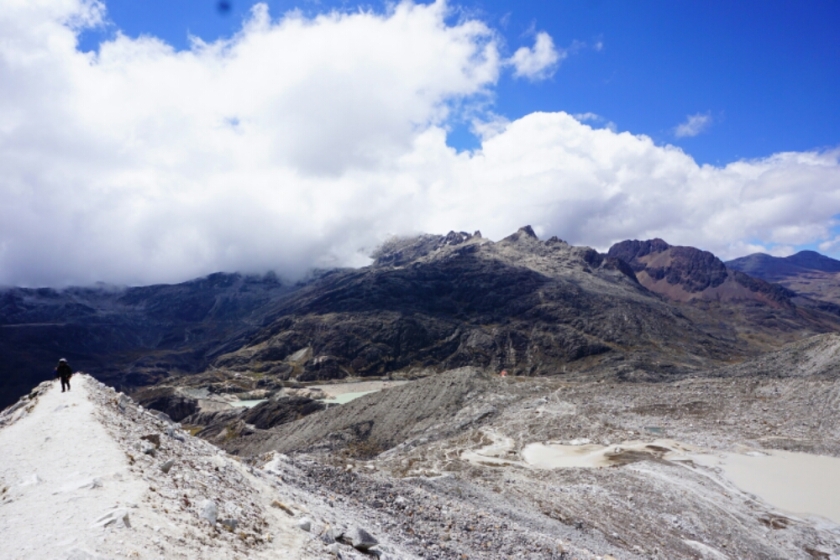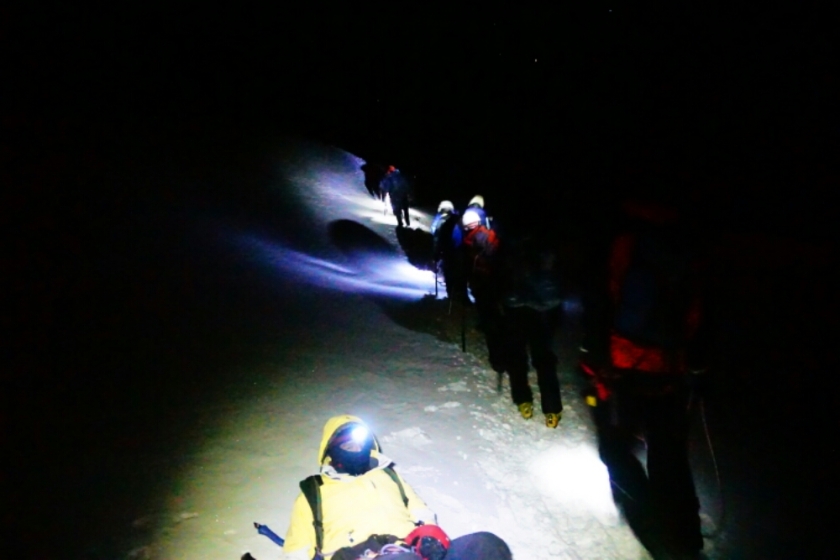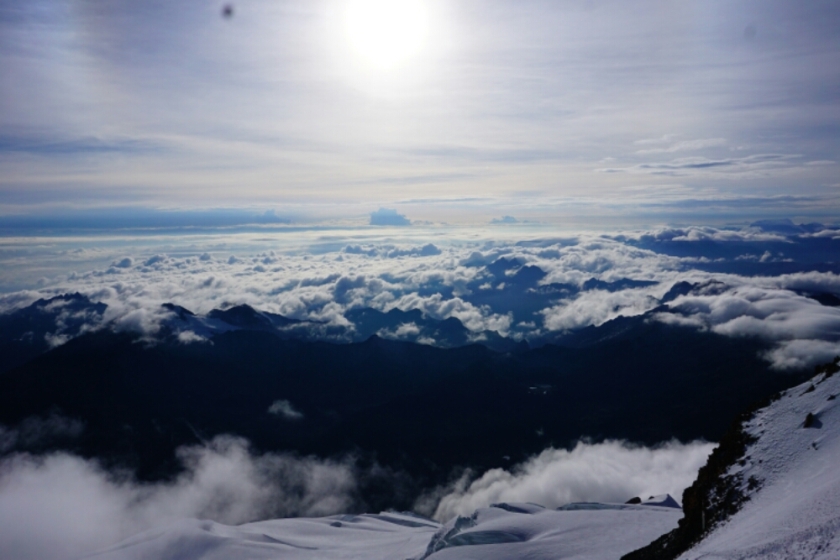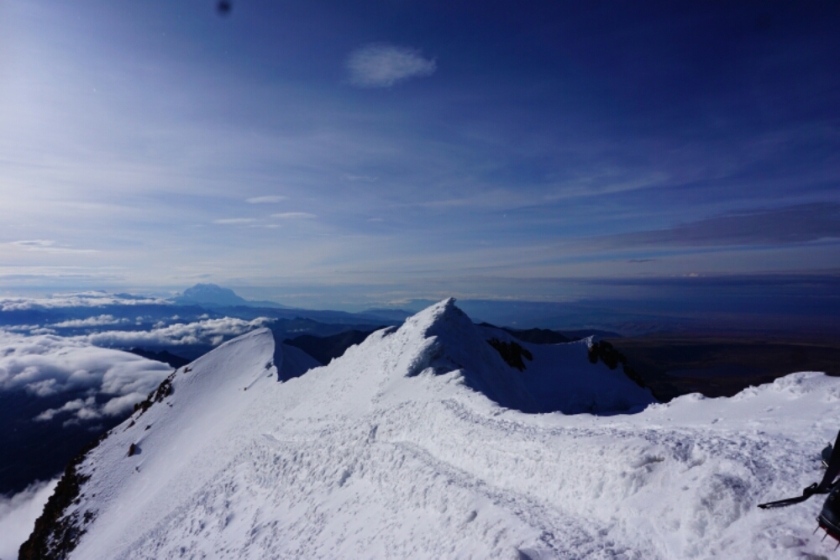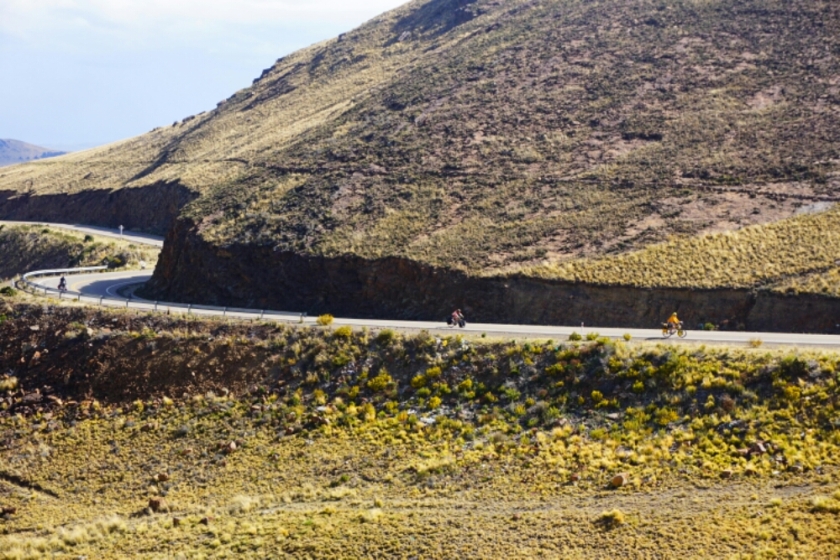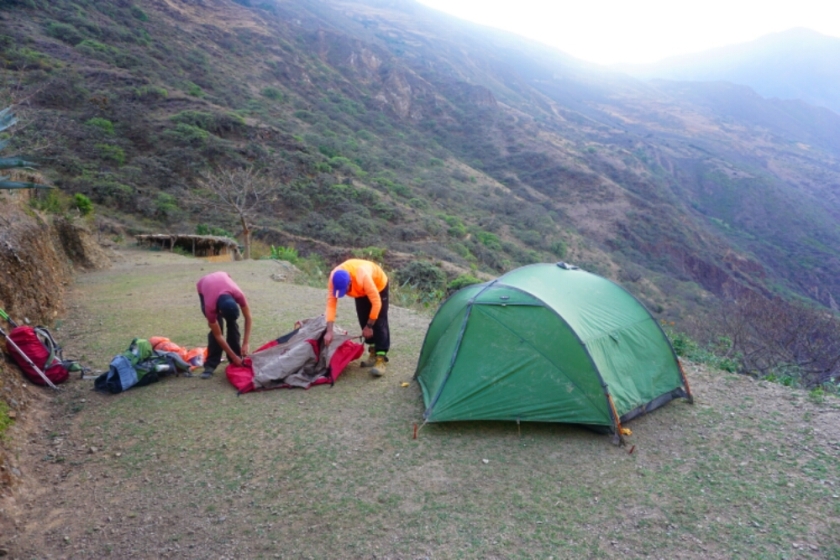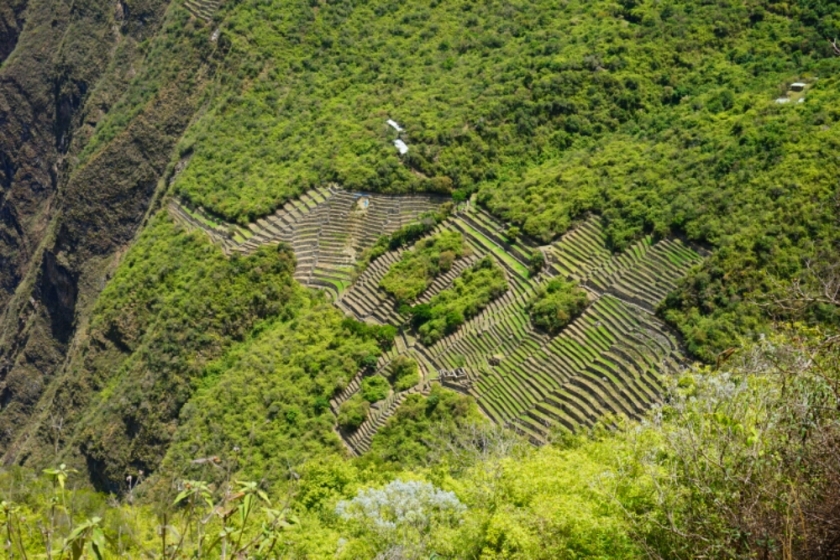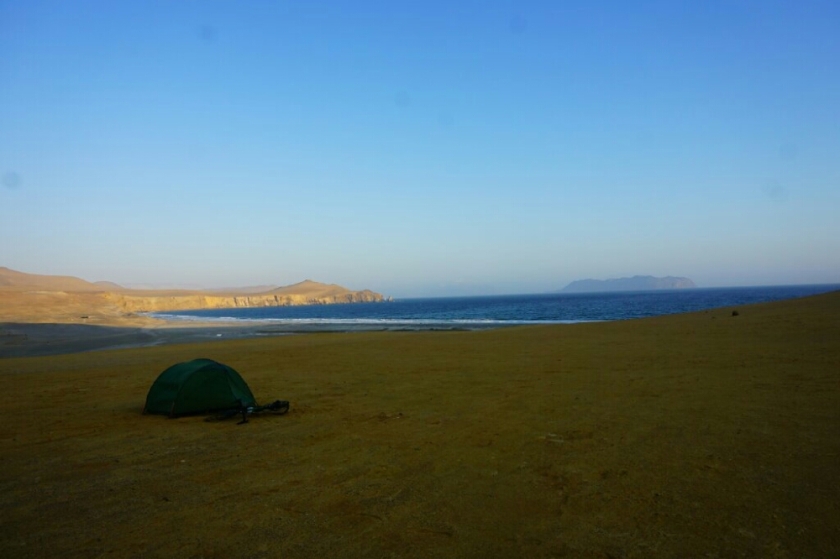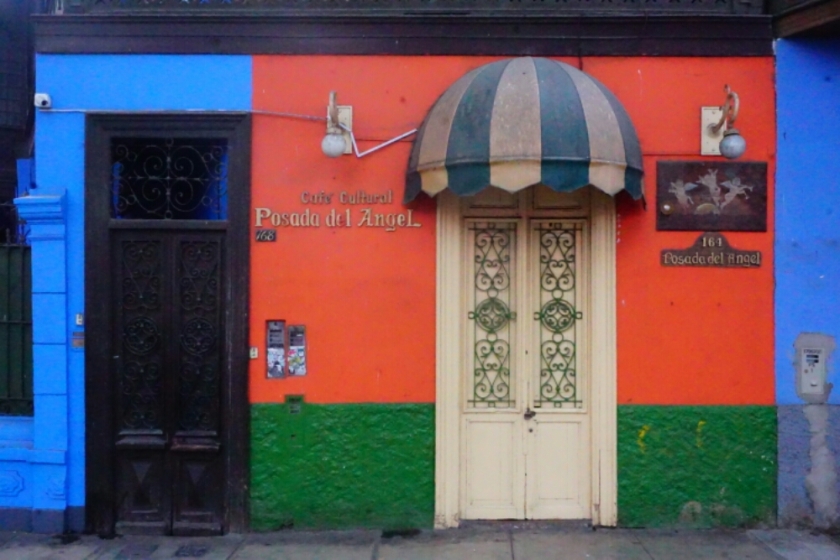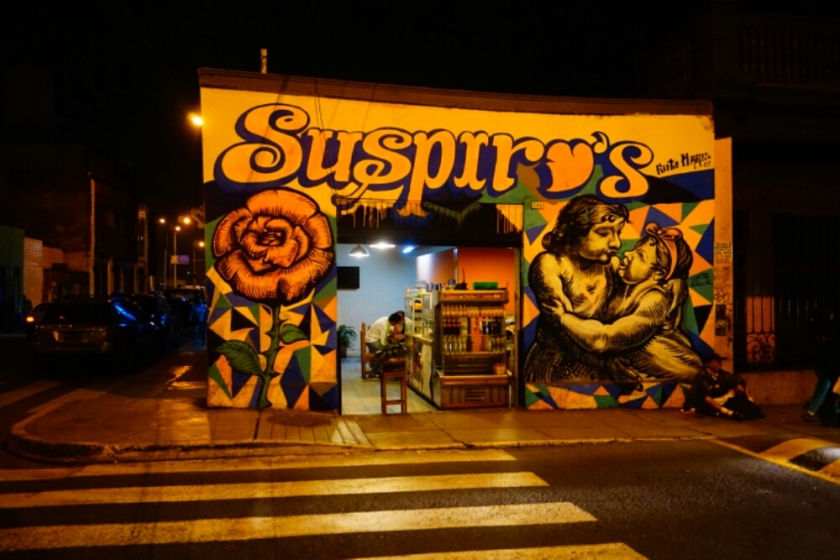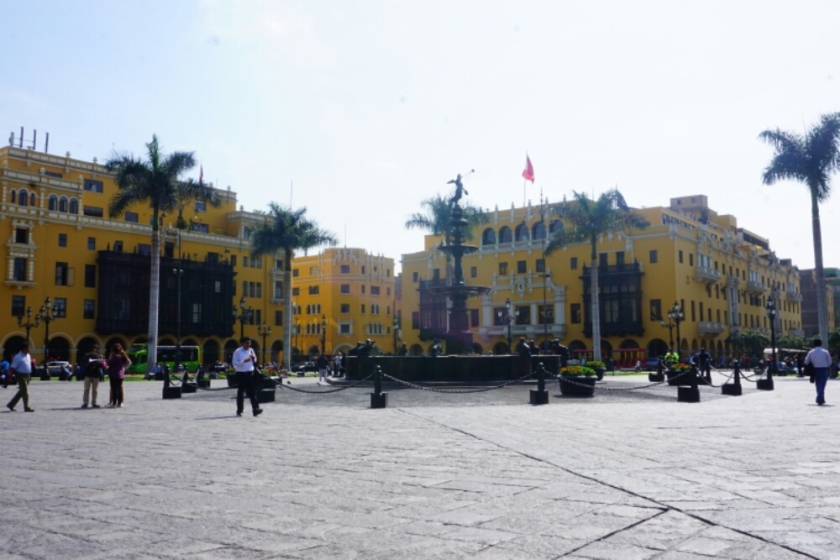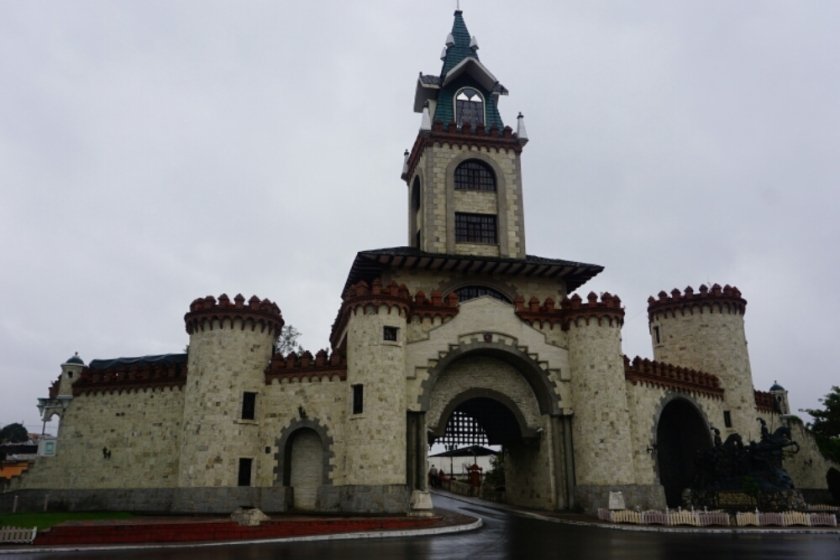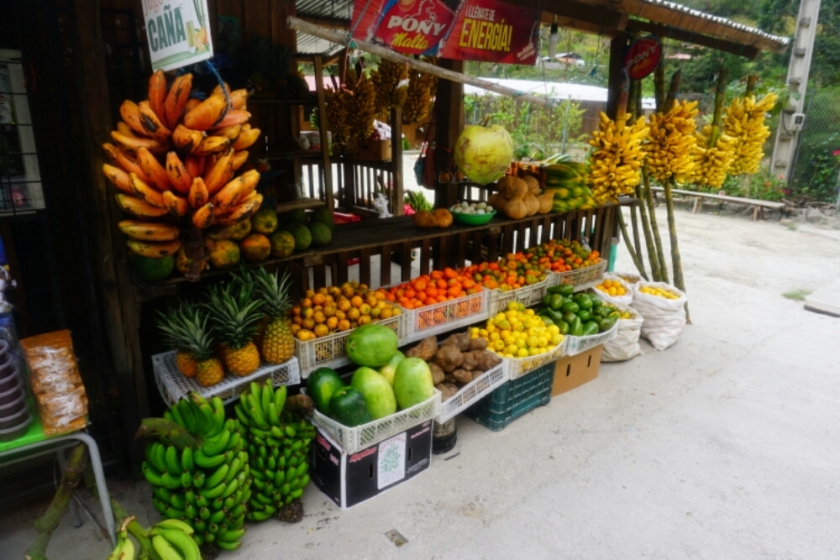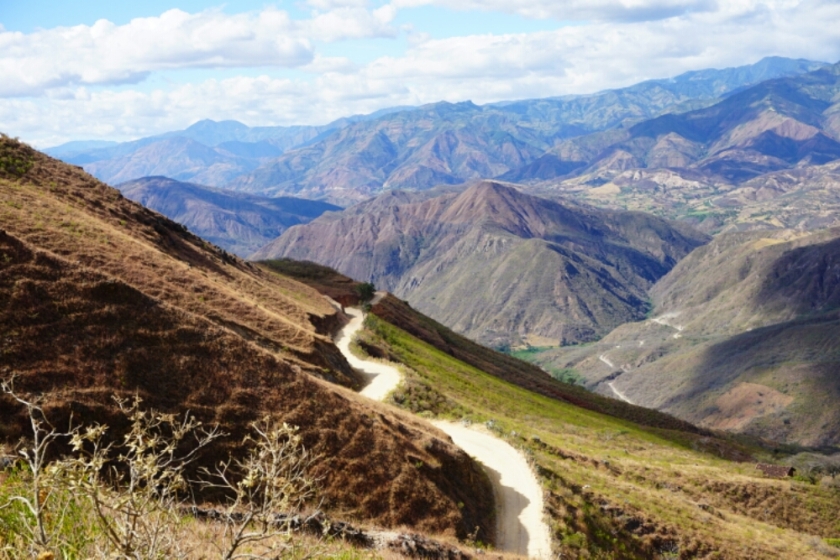After the volcano Cotopaxi (5897m) in Ecuador, where David and I climbed until a height of around 5600 meters of altitude, it was time to start my second try to exceed the magic number of 6000 meters! Huayna Potosí with 6088m of altitude it just 30km away from La Paz and the ascent shouldn’t be that technical. But what I learned from the Cotopaxi experience was that my body needs more time to get used to the altitude. Although I had no major problems on the glacier in Ecuador, I was close to the inner border of my physical fitness. Furthermore it was the first experience for Sam on that height and so we decided to climb step by step to give our bodies time. Another thing I learned was to have a close look on the equipment before booking a tour and so we spent over an hour in the tour agency and tried on pants, shoes, helmets, jackets, crampons and so on! The equipment was not brandnew and some parts were not in the best condition, but nothing what would impair our safety or comfort. And so we booked a 3 day tour and bought ahead the necessary things for the ascent.
DAY 1:
In the Casa de Ciclistas in La Paz we were on an altitude of 3500m. The days before next to the lake Titikaka we were always between 3800m and 4350m, so the first aclimatization step was already accomplished. Because of a strike of the buses in the city, which blocked the streets in the whole city, we had to leave very early to leave the city. With the taxi the agency collected us from our accommodation and at their office we switched into a van to leave the city. On our way we heard that another group, who tried to leave later, was not able to get out of the center, so we were lucky. After leaving the city boundaries we went on a dirt road into the mountains towards the first refuge on 4750m. We were welcomed by a indigenous lady of the Amayram tribe. I was still quite tired and we still had time and so I first took a two hours nap in our shelter. Well rested we had lunch with a tasty vegetable soup and for me a vegetarian main dish with rice, egg, french fries and salad while Sam was having chicken instead of the egg. I was suprised that I was asked in the tour office about being a vegetarian – very considerate!
After the strengthening we accompanied by our host woman and her child to a nearby glacier where we met Adrian, our guide, who gave us a first briefing how to use the equipment. On our way we were walking to the clouds of a thunderstorm. The noise of the thunder was reechoing in the mountains and generated a mighty atmosphere. We arrived the glacier and got to know Adrian. The first few introductions where easy to learn and viable, the second part was new to me and more challenging. Sam and me had to learn how to overcome the steep face out of ice and subsequently a vertical ice wall. And although we will not face a vertical wall on our way to the top, we were happy to have gained that experience. After that lesson we went back to the refuge were we had an extensive meal in the afternoon and plenty of time to relax.
DAY 2:
We got up at around 7:30 and had an extensive breakfast. Before ascending to the second refuge on 5130m, we explored the surroundings of the first refuge cause there were still some more time left. For the water supply they constructed a canal from a upper lake, which is filled by glaciers. Furthermore the use all the glacier water to produce energy, so huge power grid transport the energy to La Paz and El Alto.
At 10 a.m. we left, the weather was good, some sun and some clouds took turns. The equipment for the glacier in our backpack, as well as some food and the sleeping bag, we had to carry around 15 kilos up the mountain. The way was good to walk, the altitude bounded the speed but after two hours we arrived in Campo Alto! The day ended by playing the card games ‚Rikiki‘ and ‚Belotte ‚which were teached by group of belgium travellers. The atmosphere was very good under all the groups who wanted to climb to the top! At 7 o’clock everybody went to bed to gain energy for the next day.
DAY 3:
At midnight a guide entered the bedroom by making the noise „bru bru bru“ to imitate an alarm and one by one everybody went on their feet! Somebody was playing a song on their cell phone and suddenly everybody were tapping in the rhythm of the song. It seemed as if everybody were excited to go up.
Sam and me were informed that we will have another guide for the ascent. Juan seemed to be a little tired at the beginning, cause he first forgot to get on his crampons and after he put them on, he left his gloves in the snow. Good start, I thought, but no further similar incidents happend. The way up was again taking ages – step by step we were walking up. In the dark the world of ice and snow around us as well as deep holes and slopes were not visible. Only the lights of the other groups and the alighted feet of Sam and the snow in front of me were able to be seen.
Steep parts and nearly plane parts alternated. After around 4 hours we were going up on a steep ridge of maybe one and a half meters wide, where on both sides it was going down into the darkness. Leaving that behind it became to get lighter – the sunrise was getting closer until we could turn off our headlamps.
The last part of the path was possible to see and with it the steepness of the last few meters to the top. Some groups were already inside that part, struggling to go up. Other groups already turned around and I also had my problems. I had to fight against a rising headache and while we had a break I was getting tired. The guide already asked if we should turn around but we were close and so Sam and me mobilized our last energy. The steepest part at the end was demanding everything of our endurance and concentration and I was again at a point to give up.
When I was finally reaching the top, I was so touched by the view and by the fact that I had really reached the top of Huayna Potosí, which is an insane 6088 meters high.
We enjoyed the view for some minutes, but due to the rising temperatures we had to start the way back to the refuge. After 6 hours of such a hard climb we still had to stay concentrated for the descent and it appeared to become a very challenging way down cause due the sun the ice was starting to melt. This fact entailed that the crampons were full of snow and so the grip was getting less. Now we were able to see all the beautiful forms of the glacier, but also the steep slopes directly besides us. Reaching the ridge, the situation was extremely dangerous. We went down very slowly, removing the slippery snow underneath the crampons nearly every step. After another 3 hours we were happy to reach the Refugio. Here we had one hour to rest before we went down another 1 1/2 hours to the second refuge were the car to la Paz was already waiting.
It was another amazing experience, but I guess I wouldn’t do it again. The view from the top is mind-blowing, but it does also demand everything of yourself, it’s definitely not healthy and also not without a risk!
